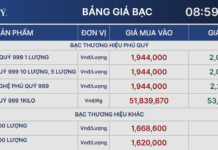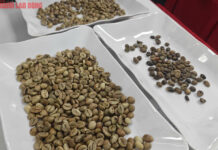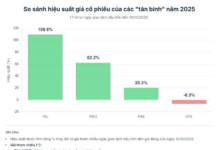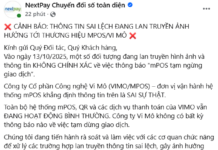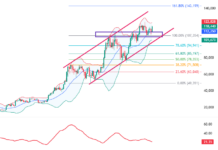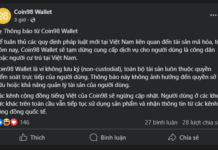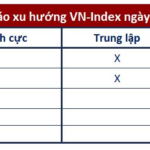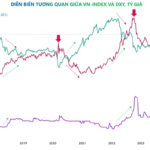Investors pulled back significantly during today’s morning session, awaiting crucial events on the horizon. The FED meeting, derivative expiration, and foreign ETF restructuring will converge this week. A sharp decline in liquidity is typical during such periods of anticipation.
The sluggish trading pace and thin demand resulted in erratic and unreliable stock price movements this morning. The downward slide began around 10 am and persisted until the end of the session, with the VN-Index ultimately shedding 0.91 points (-0.07%) to close at 1261.66, after peaking at a 4.53-point (+0.36%) gain. The breadth of the market narrowed from 196 gainers to 109 losers at the peak to 102 gainers and 220 losers at the close.
The standout feature of today’s session was the lackluster liquidity, with both exchanges recording a meager 4,196 billion VND in matched trades—the lowest in 17 sessions. HoSE, in particular, witnessed a nearly 4% decline in trading value compared to the previous session, settling at 3,935 billion VND.
Interestingly, the most liquid stocks in the market managed to hold their ground despite the overall subdued sentiment. On the HoSE, out of the nine stocks with trading value surpassing 100 billion VND, only two declined: DIG, which fell 3.41% with 200.3 billion VND in turnover, and HPG, which slipped 0.37% with a turnover of 118 billion VND. FPT and SSI, two blue-chip stocks leading in liquidity, posted modest gains of 0.2% and 0.39%, respectively. Notably, mid-cap stocks like VIX and PNJ displayed resilience, with VIX climbing 1.99% on a turnover of 105.4 billion VND, and PNJ advancing 1.55% with a turnover of 103.5 billion VND.
The VN30 basket, comprising the largest caps on the market, traded sideways for most of the morning, with BID being the sole standout, climbing 1.19% with a turnover of over 101 billion VND. Only seven stocks in the basket finished in positive territory, while the remaining 23 either declined or remained unchanged. The losers included 16 stocks, among which MWG’s 1.31% drop and BVH’s 1.13% slide were the most notable. Neither the gainers nor the losers exerted a significant impact on the index, as reflected in the VN30-Index’s 0.19% decline for the morning session.
The market’s sea of red this morning, with decliners outnumbering advancers, doesn’t necessarily spell doom and gloom. In fact, it marks the seventh consecutive session of subdued and range-bound trading as investors bide their time ahead of pivotal news. It’s not surprising that most stocks plunging over 1% today lacked substantial trading activity, with the exception of DIG. Out of the 60 stocks on the HoSE that declined by more than 1%, only eight recorded turnovers of 10 billion VND or higher, and two-thirds of this group traded below the 1-billion-VND mark. Aside from DIG, stocks like NKG, MWG, YEG, and VTP witnessed relatively higher trading volumes. However, excluding DIG, the combined turnover of this group of sharp decliners accounted for just 8.3% of the total floor turnover—indicating a lack of broad-based selling pressure.

On the flip side, while there weren’t many stocks that surged significantly, a handful managed to attract decent trading interest. Four stocks stood out with turnovers exceeding 100 billion VND: SIP, which climbed 3.03%; VIX, up 1.99%; PNJ, advancing 1.55%; and BID, rising 1.19%. Additionally, four other stocks displayed solid liquidity and decent gains: VPI (+1.21%) with a turnover of 55.8 billion VND, FRT (+1.54%) with 49.1 billion VND, HAG (+1.21%) with 26.2 billion VND, and VGC (+1.14%) with 23 billion VND. Considering the entire HoSE, only 29 stocks posted gains of more than 1%, indicating that, in terms of liquidity, the gainers still outnumbered the decliners.
In summary, today’s market dynamics were largely characterized by extremely low overall liquidity, with the majority of stocks trading within tight ranges. While shifts in supply and demand can temporarily push prices lower or higher, these movements are not indicative of sustainable trends and can easily reverse at any moment.
Foreign investors also participated cautiously, with net selling on the HoSE amounting to just 72.1 billion VND—the lowest in seven morning sessions. No single stock experienced significant foreign selling pressure, with the top sold stocks being BID (-36.6 billion VND), DIG (-31.1 billion VND), and MSN (-20 billion VND). On the buying side, SIP (+43.6 billion VND), SSI (+28 billion VND), HDB (+25.2 billion VND), and VIX (+20.1 billion VND) attracted the most foreign interest. However, with foreign ETF restructuring expected later this week, their trading activity could pick up significantly.
“Proposing a Dedicated Government Bond for Multi-Billion Dollar ‘Mega Projects’”
Experts are calling for the issuance of specific government bonds to attract additional investors for mega-projects currently valued at billions of dollars. An example of such a project is the high-speed North-South railway, with an estimated total capital of 67 billion USD, slated for completion in 2035.
The Highest Savings Rates: A Turnaround for a Bank Under Special Supervision
“Currently, most banks under special control, including Dong A Bank, OceanBank, CB, and GPBank, are offering some of the highest interest rates in the market.”
The Expert’s Take: Markets Await Liquidity Boost
In an optimistic scenario, the VN-Index retests the 1,250-1,255 region, building a foundation and accumulating with increased liquidity, confirming year-end recovery signals. A cooldown in the DXY index and stronger net foreign buying could spur a revival in liquidity.

